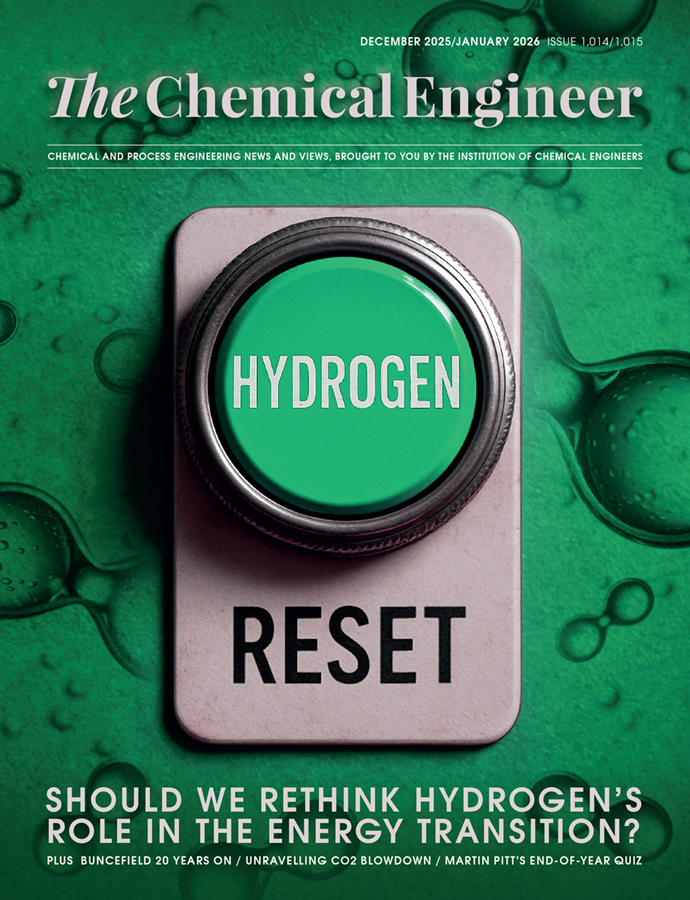The Engineering Mindset Part 7: Complex or Complicated? Achieving negative carbon emissions

Chris and Penny Hamlin look at how a complexity-focused strategy can identify innovative pathways and solutions that move the chemical industry beyond net zero and to a future of negative emissions and sustainable practices
Quick read
- No one-size-fits-all solution: The complexity of greenhouse gas emissions in the petrochemical sector demands a systems-based approach that balances both supply- and demand-side measures, rather than relying on a single “optimal” solution
- Understanding carbon pathways: Shifting from high-emissions carbon flows (like ground-to-air) toward neutral or negative-emissions pathways (like air-to-ground) can guide the petrochemical industry toward net zero, highlighting the importance of carbon vector “direction” over destination
- System constraints matter: Achieving net zero depends not just on new technologies but also on understanding and addressing current limitations in recycling capacity, bio-based feedstock availability, and carbon sequestration infrastructure
IN PREVIOUS articles we have explored the significant differences between complex and ordered systems and explained why it is essential to view the petrochemical sector through a complexity-based lens. This approach is particularly pertinent when we look at the complex issue of greenhouse gas emissions. All too often “solutions” focus on one supposedly “best” approach that ignores the fundamental basics of complex systems, that there is never a one-size-fits-all solution. It also has the problem of trying to work backwards from a supposedly optimal end-state, rather than working forwards from next steps that are viable and achievable today.
The C-THRU project team took a more holistic approach and considered the entire chemical production system and the role of carbon within the value chain. Carbon is the critical factor – being both an essential element in many chemicals yet also the source of two of the most polluting greenhouse gases, namely CO2 and methane. Mitigation measures have, to date, focused on developing technologies and solutions to reduce supply-side emissions, with little emphasis on demand-side actions. Much of the earlier research has also assumed that emissions are inevitable. Yet from an emissions perspective, the embodied carbon in a product is only released when it is burned, so measures that keep the carbon in the product can significantly reduce emissions.
While recognising that both supply- and demand-side actions are essential to achieve emissions reductions, the team flagged up the danger of developing solutions which lock the industry into pathways that don’t fully address the problems. Technologies for carbon capture, usage, and storage (CCUS) are not yet deployed at scale, and other approaches such as electrification, direct air capture (DAC), and bio-based feedstocks face similar challenges.
The team also looked at options being proposed at the other end of the spectrum. These are equally problematic. Moving to ban all plastics risks exacerbating emissions as alternatives may be more polluting, and shifting to 100% circularisation is similarly challenging. The laws of thermodynamics limit material recovery processes so complete circularity is unachievable.
C-THRU’s complexity-based approach recognised that the net zero emissions requires viable pathways that include a mix of demand- and supply-side actions which are technically and financially feasible. These could be deployed in different combinations in different contexts to maximise the effects.
C-Thru
The C-THRU research project (www.c-thru.org) was a three-year multi-disciplinary transnational research project which aimed to understand and propose approaches for mitigating greenhouse gas emissions from the petrochemical industry.

Inverting the vectors – direction not destination
There are four carbon pathways: ground-to-air, ground-to-ground, air-to-air, and air-to-ground, each with varying emissions intensities.1
1. The primary current pathway is ground-to-air. Carbon is taken from the ground by way of fossil fuels and used to make plastic which is then generally incinerated at end of life. This releases the carbon back into the atmosphere, resulting in high levels of greenhouse gas emissions.
2. A less emissions-intensive option is to develop a ground-to-ground approach. This still uses fossil fuels as the carbon source but focuses on sequestration at end of life so that in effect the carbon is returned to the ground. Technology is currently focused on carbon capture solutions whereby the emissions from incineration are prevented from entering the atmosphere, and stored underground. Emissions are lower than the current predominant activities, but there is still unabated fossil feedstock production and associated methane leakage.
3. A neutral emissions option would be to develop an air-to-air approach. This would use atmospherically sourced feedstocks from biogenic sources, for example. Assuming these are burnt at end of life then the carbon that is extracted is returned to the air so there is no net change in emissions. In the interim there is a period of negative emissions as the carbon is taken from the air and put into a product.
4. This naturally leads on to the final pathway which is air-to-ground which makes chemicals from carbon taken from the atmosphere in terms of biogenic feedstock, but rather than allowing end-of-life emissions to return to the air, they are captured and stored in the ground. This could be via CCS or landfill.
In Figure 1, ground-to-air emits the most carbon (C++) and should be avoided wherever possible. So, we need to identify and focus on pathways that shift to ground-to-ground, which has lower emissions (C+), air-to-air, which is largely carbon neutral (C=) and, finally, air-to-ground, which is carbon negative (C-). Understanding the limitations of each pathway enables us to identify how much demand reduction is essential. By inverting the carbon vector in this way, the chemical industry has the potential to achieve negative emissions, and perhaps help other industries achieve net zero.

Recent Editions
Catch up on the latest news, views and jobs from The Chemical Engineer. Below are the four latest issues. View a wider selection of the archive from within the Magazine section of this site.




